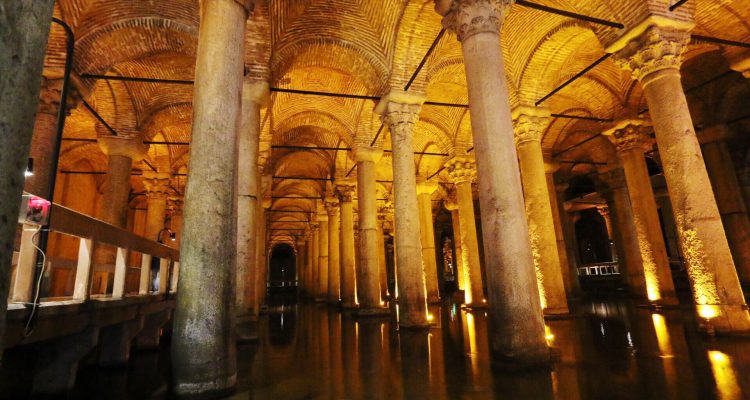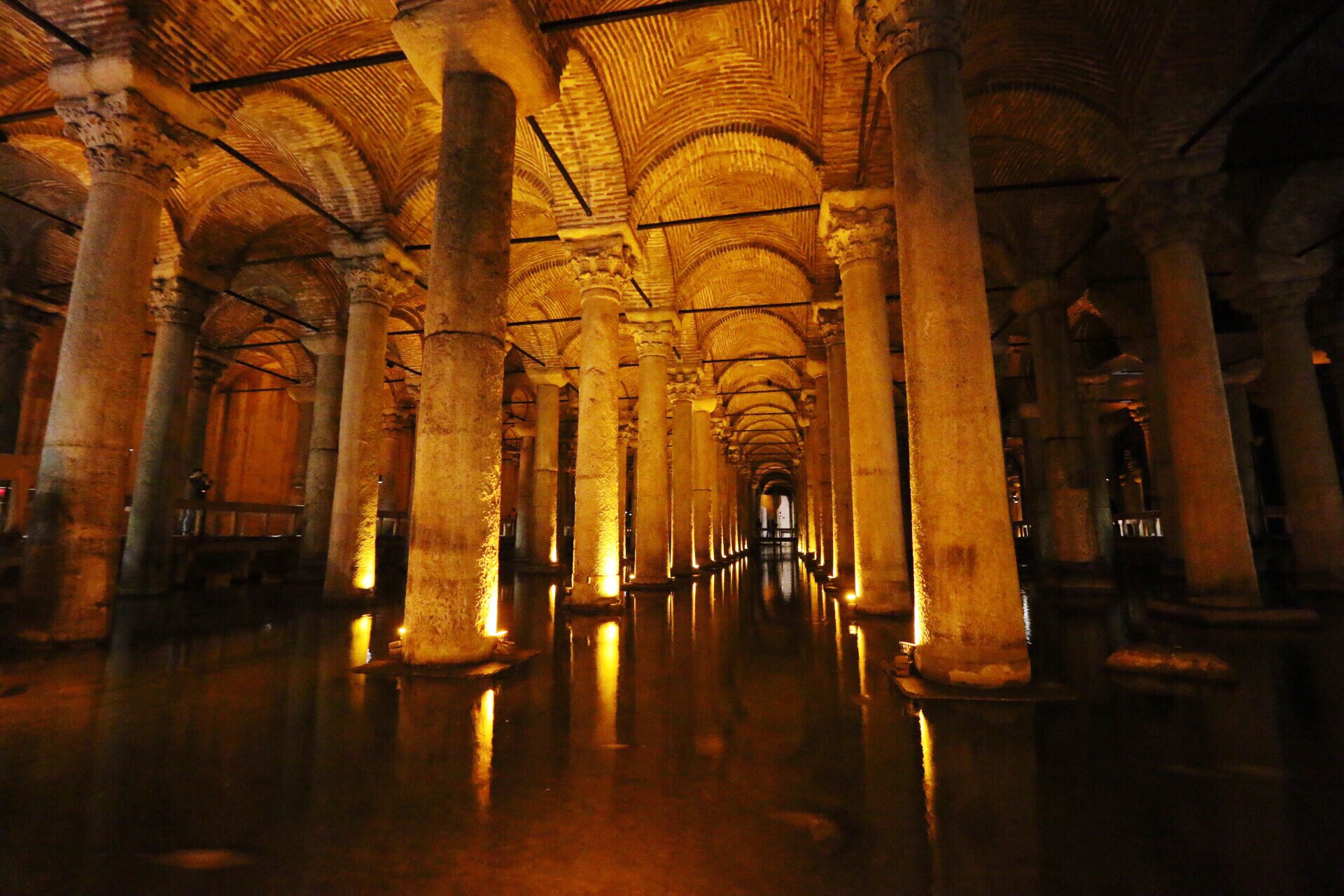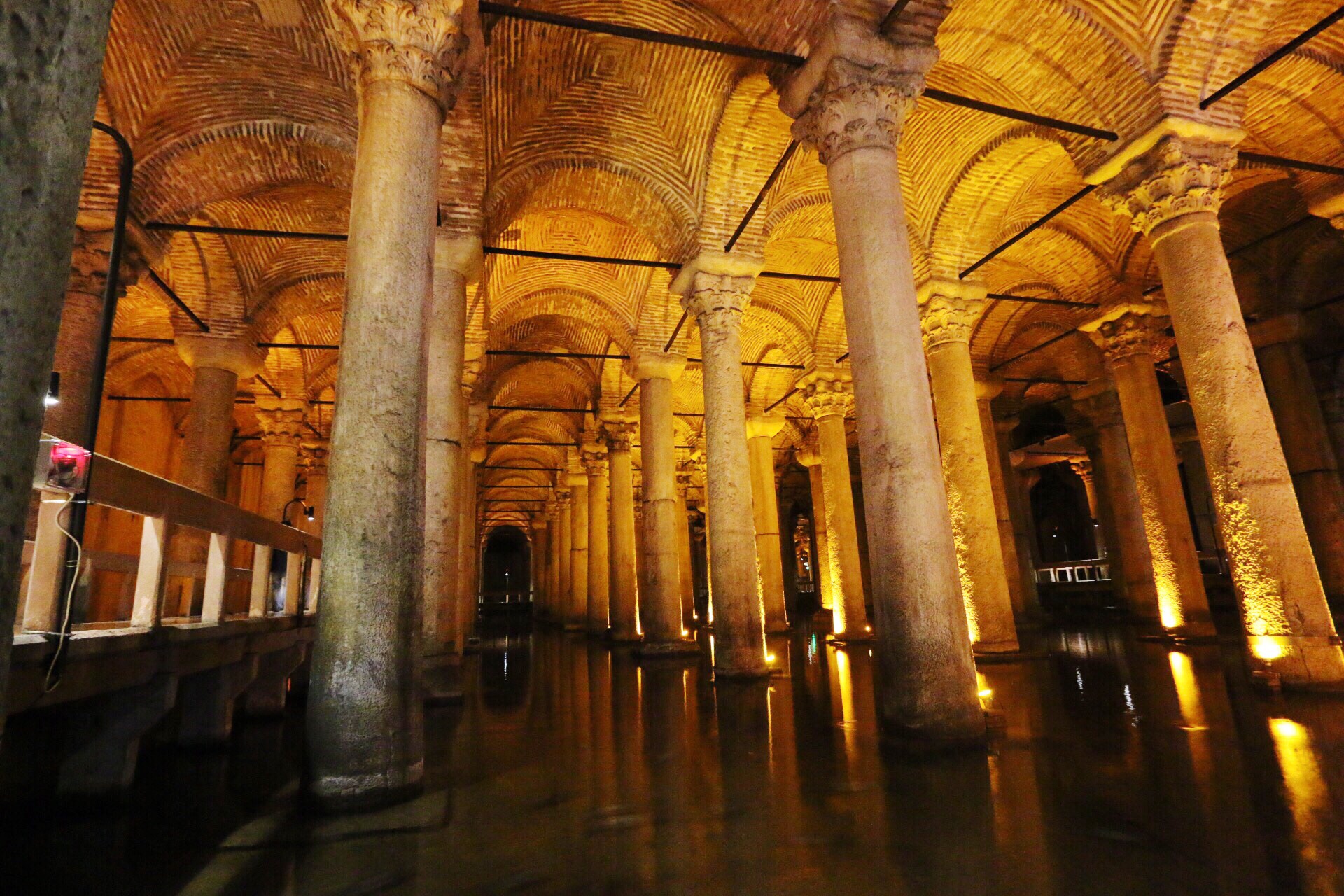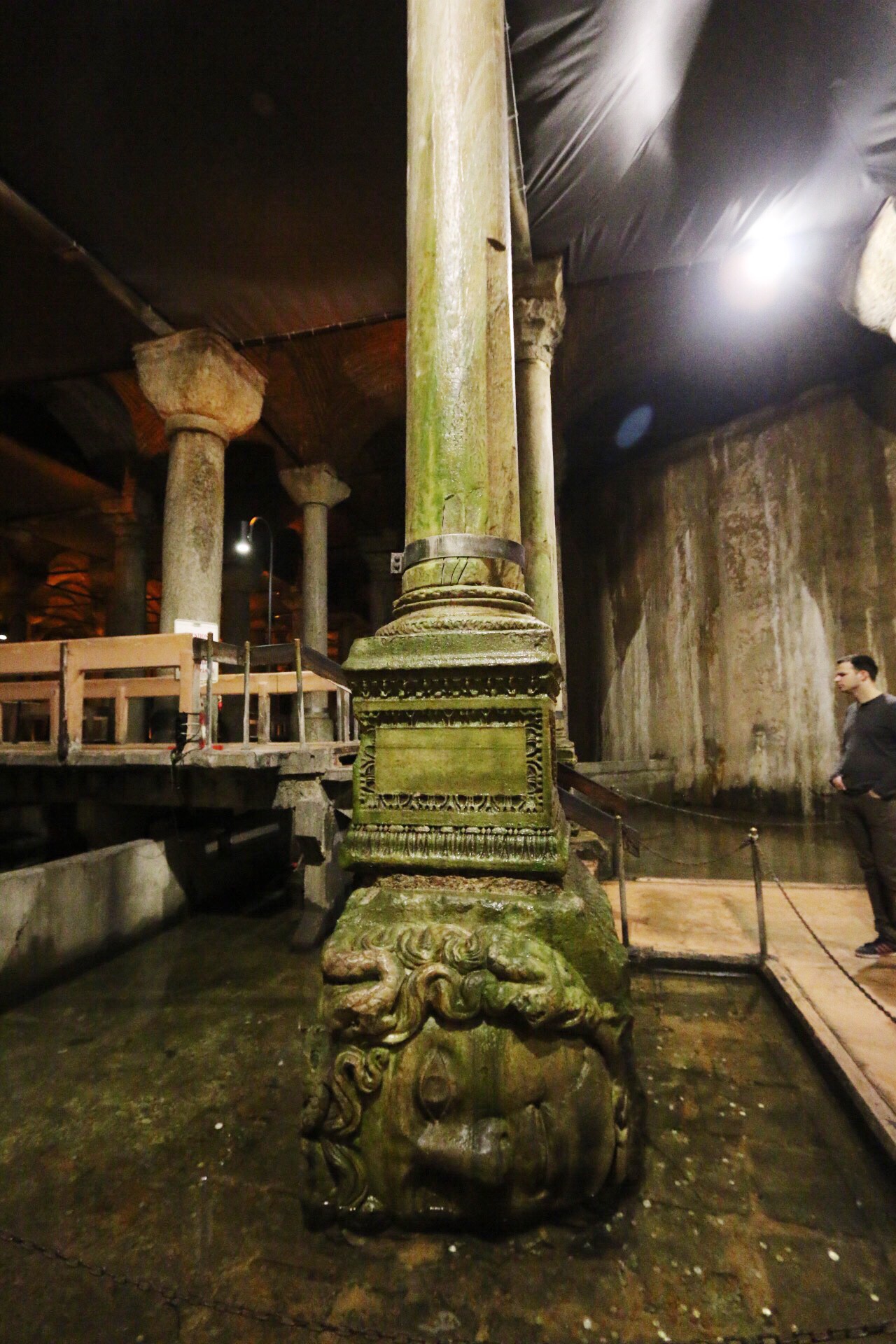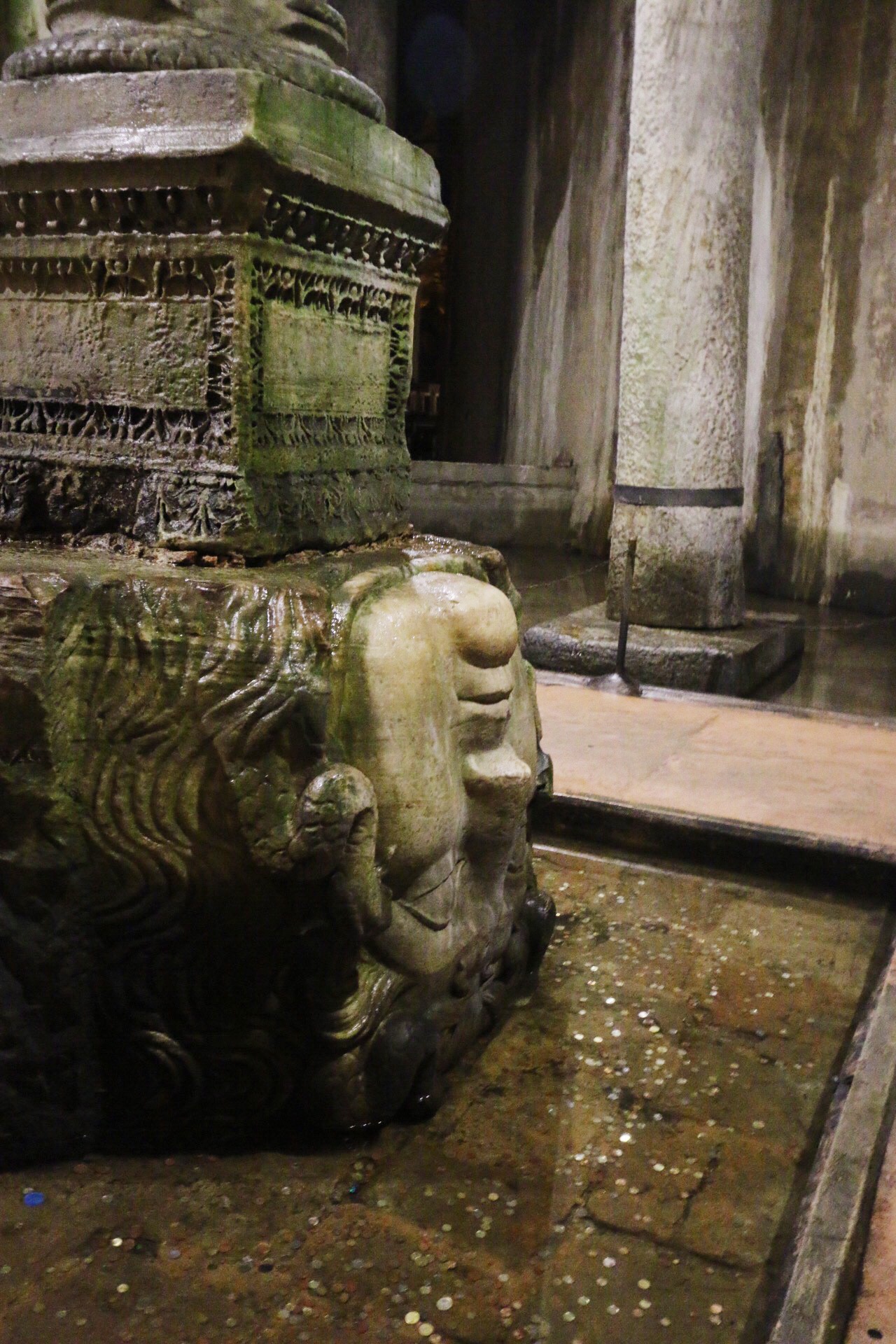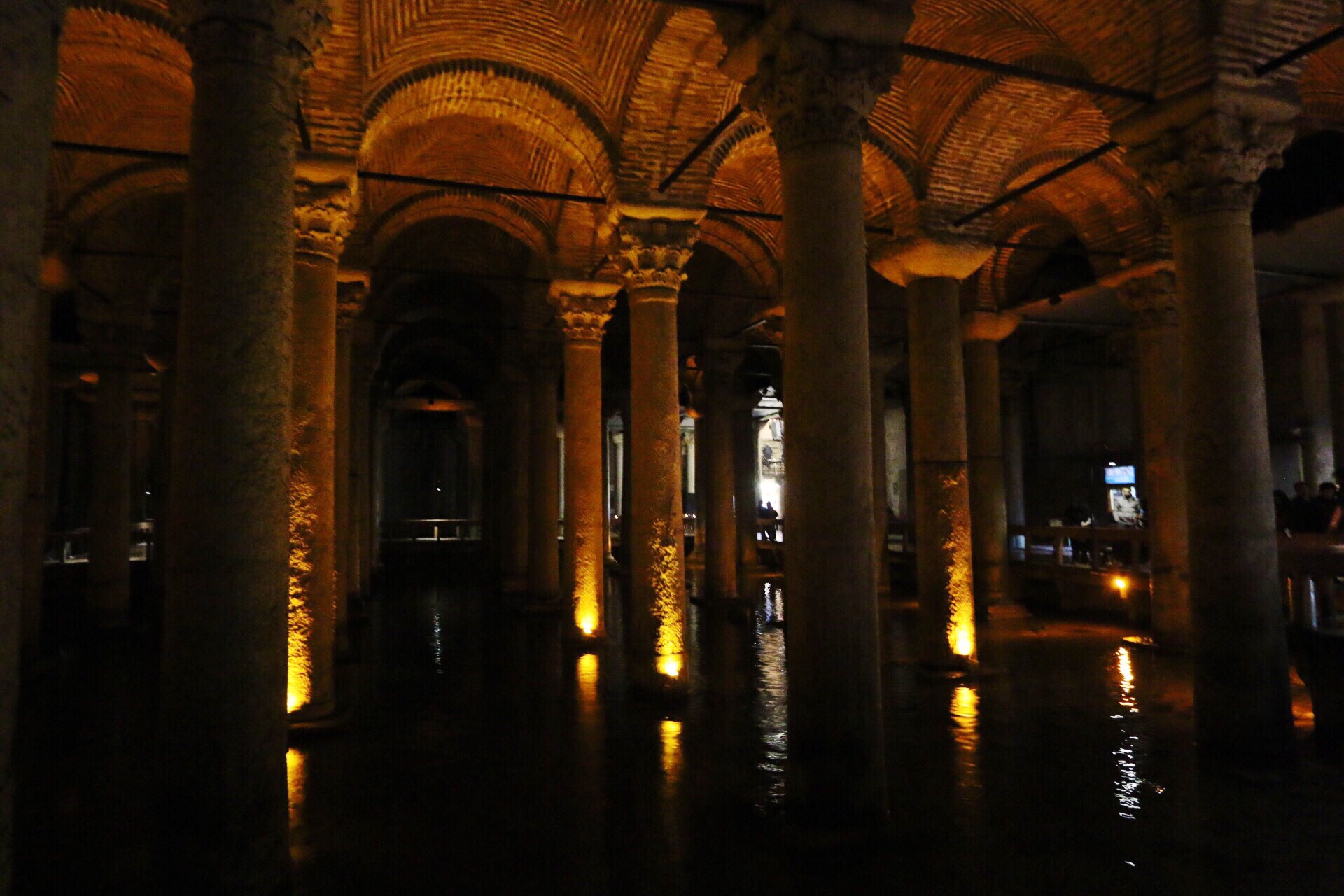It is one of the landmark buildings of Istanbul. Yerebatan Sarayi, also known as the Basilica Cistern, is one of the many underground cisterns of the city, and it lies just beneath the center of Sultanahment. It was the first cistern that has been restored. Even if it is usually crowded with many visitors, but it always represents a spectacular place to visit. It was built by Emperor Constantine in the fourth century and then enlarged by Emperor Justinian in the sixth century.
The Cistern’s water came straight from the Belgrade Forest in order to supply the main palace as well as the Topkapi palace. The Cistern fell into disuse after the Ottoman occupation. It was forgotten until such time as the Frenchman Petrus Gyllius rediscovered it in 1545. He noticed that people in the neighborhood built their houses above the Cistern; they not only dug a well, but they could even caught fishes.
In 1987 50.000 tons of water and mud were removed, the walls were covered in order to strengthen the structure and eight of the columns were sheathed with reinforced concrete. The raised pathways that replaced the rowboats used by early tourists may now seem a desecration; however, along with a well cured lighting they do facilitate the examination of the structure. Despite one can hear some music soundtrack while visiting the Basilica Cistern, this place keeps a special atmosphere characterized by carps swimming in the water.
The Yerbatan Cistern was the largest of the many cisterns that lie underneath Istanbul, and it could hold 80,000 cubic meters of water. The small domes are supported by 336 columns, many of which have Corinthian capitals. Columns are characterized by different styles and they may have been recycled from other buildings – one of them may come from the triumphal arch of the Forum of Theodosius, in Beyazit. The two capitals carved with the face of Medusa – which support two columns in the southwest corner of the Cistern – clearly belong to a older building.


